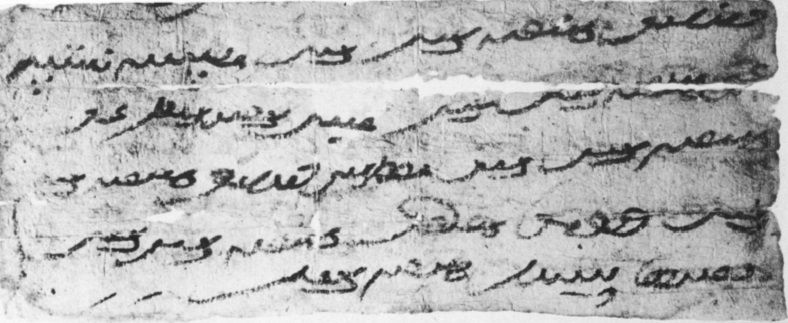Details
Details
Turki 7 (Erdal Doc. III)
Gold (given following external peer review through journal/book publication)
Physical Description
Incomplete, top and bottom are missing, some tears along fold lines
7
ca. 4 horizontal + 3 vertical fold lines
Content
A fragment of a land sale document consisting of six witness statements. This is one of six land sale documents written in the late eleventh century, collected by Denison Ross, of which photos were kept at SOAS. Formally, these documents differ from the non-Muslim deeds of land sale in the collection, which according to Erdal follow Chinese models. Erdal used these photos while the whereabouts of the originals were (and remain) unknown. Provenance seems to be a garden outside Yarkand where the documents were found in 1911. For details, see Erdal’s article (see Publications).
Dates
- The Gregorian calendar: None
People
- İsḥaq Narsi-chi
- ʿAlī Muḥammad-chı
- ʿUthmān
- Bäbäk
- Yūsuf
Publications
- Erdal, Marcel. "The Turkish Yarkand Documents." Bulletin of the School of Oriental and African Studies 47/2, 1984. pp. 260-310 (Pages: 280-281, pl. IV)
Related Shelfmarks
IEDC Data
155
24/06/2024
24/02/2025
Citations
Mateen Arghandehpour
Arezou Azad
All text has been taken from the publication, formatting has been changed to match IEDC style
Images of this Text displayed on this web page are provided by Yarkand Collection at SOAS.
© Yarkand Collection at SOAS, All rights reserved.
If you wish to reproduce these images please contact Yarkand Collection at SOAS.
© Yarkand Collection at SOAS, All rights reserved.
If you wish to reproduce these images please contact Yarkand Collection at SOAS.
Contact
invisible_east@conted.ox.ac.uk (Please include the above permalink when contacting the editorial team about this Text)
